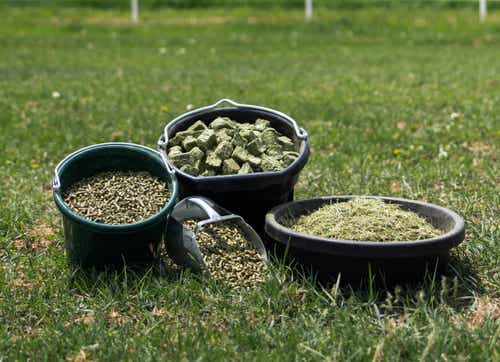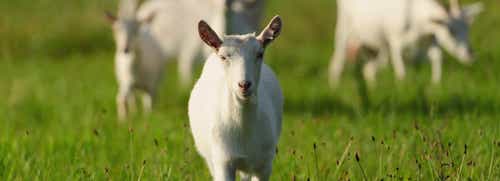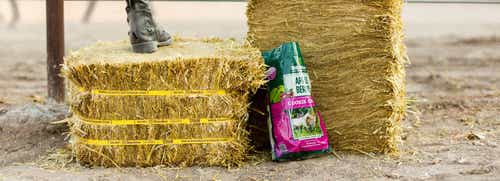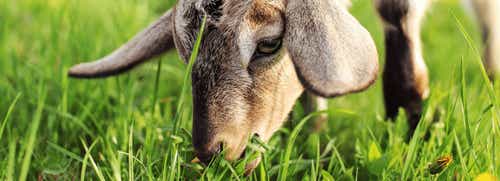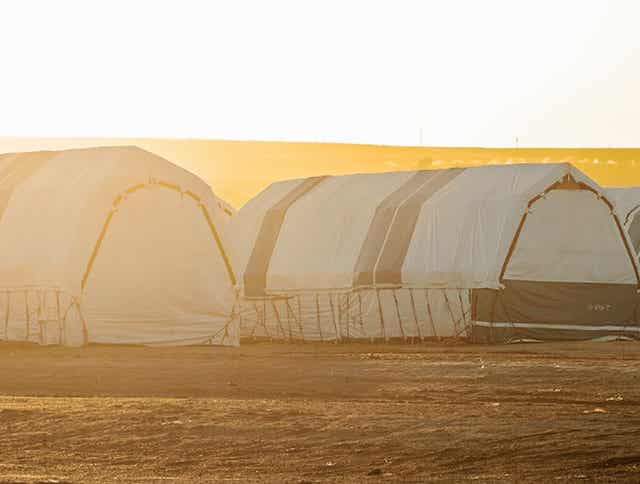
Hay Storage for Safety and to Prevent Losses
Forage (fiber) is the most important part of any horse’s diet. The majority of horses get their forage requirements from hay. Most horse owners go to great lengths to ensure their horse grain is stored in a secure location, but hay storage is not always held to the same standards. When it comes to hay storage, there are a few things horse owners can do to help guarantee their hay will stay in good condition and have minimal loss and waste:
Do not allow hay to get wet
Water and moisture cause mold and are the biggest culprits in hay losses. Mold and other organisms that grow on hay can make your horse sick. Mold can cause skin allergies and inflammation, as well as respiratory problems. Mycotoxins are harmful compounds produced by molds and these toxins can cause a wide range of clinical signs in horses, including respiratory, gastrointestinal, neurologic, and reproductive problems, even death.
Standlee Premium Product packaging is not waterproof due to perforations made in the bags. These tiny piercings made to the bags serve two purposes: to allow air to be released during the packaging process and prevent condensation from developing within the bagged product. This minimizes product damage when stacking products on pallets during the production and delivery process and reduces the chance of mold developing due to condensation. Be sure to store bagged Standlee products in the same environment as baled long-stemmed forage and not out in the weather.
Pest proof your hay storage area
Seal rodent holes and attempt to detour larger wildlife, such as raccoons, from moving in during winter months. Not only do these animals deposit feces which can carry several diseases, including Equine Protozoal Myeloencephalitis (EPM), but they can also chew through twine, creating a mess in your hay storage area.
Do not stack hay on the ground
Stacking bales on pallets encourages air circulation beneath the bales and can help prevent the bales from absorbing condensation from the ground. Hay bales stored on wet surfaces can have as much as 50% spoilage. Try not to stack hay directly against a wall, especially an external wall, as this will also decrease air circulation and can heat up hay unnecessarily, potentially causing mold growth. Hay can be stored outside if it is stacked on pallets. Tarps or other coverings should be used to protect bales from dust, sun and moisture.
Minimize the risk of fire
Fire in stored hay may occur from either external or internal causes. Internal heating is a direct result of microorganism activity in hay stored at excessively high moisture levels. Even if excessive heating does not result in a fire, it will reduce forage quality. A caramel smell may indicate that the hay is becoming hot. A metal pipe or rod driven into the center of the stack can be pulled out from time to time to feel for heat. Hay that is extremely hot or beginning to steam, often smolders until the stack is pulled apart, at which time the increased oxygen can cause the bales to burn more rapidly. Moisture and heat should be monitored for about two to six weeks after freshly baled hay is stacked in a barn or shed. When hay temperature remains below 120 degrees Fahrenheit, it is considered safe. The range between 120 and 140 degrees is considered a caution zone in which the hay should be closely monitored. If the temperature rises to 160 or above, a fire is likely. Fire is imminent if interior bale temperatures exceed 175°F and fire is present at temperatures greater than 200°F.
Always use the oldest hay first and rotate your bales so that the oldest hay is in the front of the stack. As long as moisture entry is completely avoided from any direction, and the hay was adequately dry when put into storage, it should keep indefinitely (Table 1). Regardless, it's a good practice to always use older hay first.
Nutrient Content of Stored Hay

This is a common horse owner concern. If hay has been stored in a dry environment, it’s suitable for feeding for a long period of time after harvesting. The nutritional value of hay remains relatively constant, whether a horse eats it two months or two years post-harvest.
If hay is baled with a moisture content of 10-15 percent, it should not lose more than 5 percent of its original dry matter during the first year of storage. It will lose very little of its digestible nutrients during that time or in succeeding years. Exceptions – The hay will suffer some loss of carotene, the pre-cursor of vitamin A, following one year of storage. It will also lose vitamin e content within approximately 1 to 2 weeks of cutting and baling.
Large bales stored outside will suffer variable losses, depending upon a combination of factors. These factors include:
- Moisture of the hay at baling time
- Amount of rain and snow during the storage period
- Internal drainage of the soil on which bales are stored
- Amount of space between the bales
- Type of hay (grass or grass-legume)
- The skill of the operator making the bales
Long-term storage does increase the dryness of hay, in some instances. Dry hay tends to be more brittle, so more may be wasted during feeding. Hay that has been in storage for longer periods is more prone to accumulation of dust. This is likely due to increased dryness. Total dry matter losses increase with more exposure to environmental conditions (Table 1).
| Hay Storage Options | Storage Longevity (Years) | Dry Matter Loss (%) |
|---|---|---|
| Conventional Shed | 20 | 4 to 7 |
| Tarped on Pallet | 5 | 4 to 7 |
| On Ground | 1 | 25 to 35 |
Standlee Western Premium Forage goes to great lengths to ensure their fields are planted, watered and forages are harvested at the peak of nutritional value and quality. Forage is then, immediately upon harvest, either covered on all sides (bottom, top, sides), so no sunlight or weather elements can access the hay, or it is stored in sheds at the plant.
Storage of Standlee bagged products should be handled similarly, keep these bags in a dry area, under cover and away from rodents. In general, feeding hay within 2 years of purchase is recommended. In hot, high humidity climates, moisture content might increase and reduce storage life. In the summer months, do not purchase more bagged product in humid environments than you can comfortably use within a 14-day period. In high heat and humidity, open the corners of the bags or compressed bales to allow heat to escape and allow air to circulate. Do not stack bags more than 3-4 high and leave room between stacks to further allow air circulation.
By Dr. Tania Cubitt
Standlee Nutritional Expert - Performance Horse Nutrition
References:
- Ball, D., D. Bade., G. Lacefield., N. Martin., B. Pinkerton. Minimizing losses in Hay storage and feeding. https://extension.msstate.edu/sites/default/files/topic-files/beef-publications/beef-publications-landing-page/minhaylosses.pdf
- Cothren, J. 2015. Tips on keeping your hay from going up in smoke. go.ncsu.edu/readext?362362
- Wilcke, B., G. Cuomo, and C. Fox. 1999. Preserving the Value of Dry Stored Hay. University of Minnesota Extension Service publication FO-07404-GO


